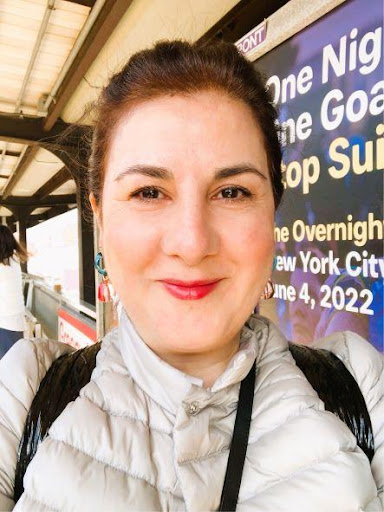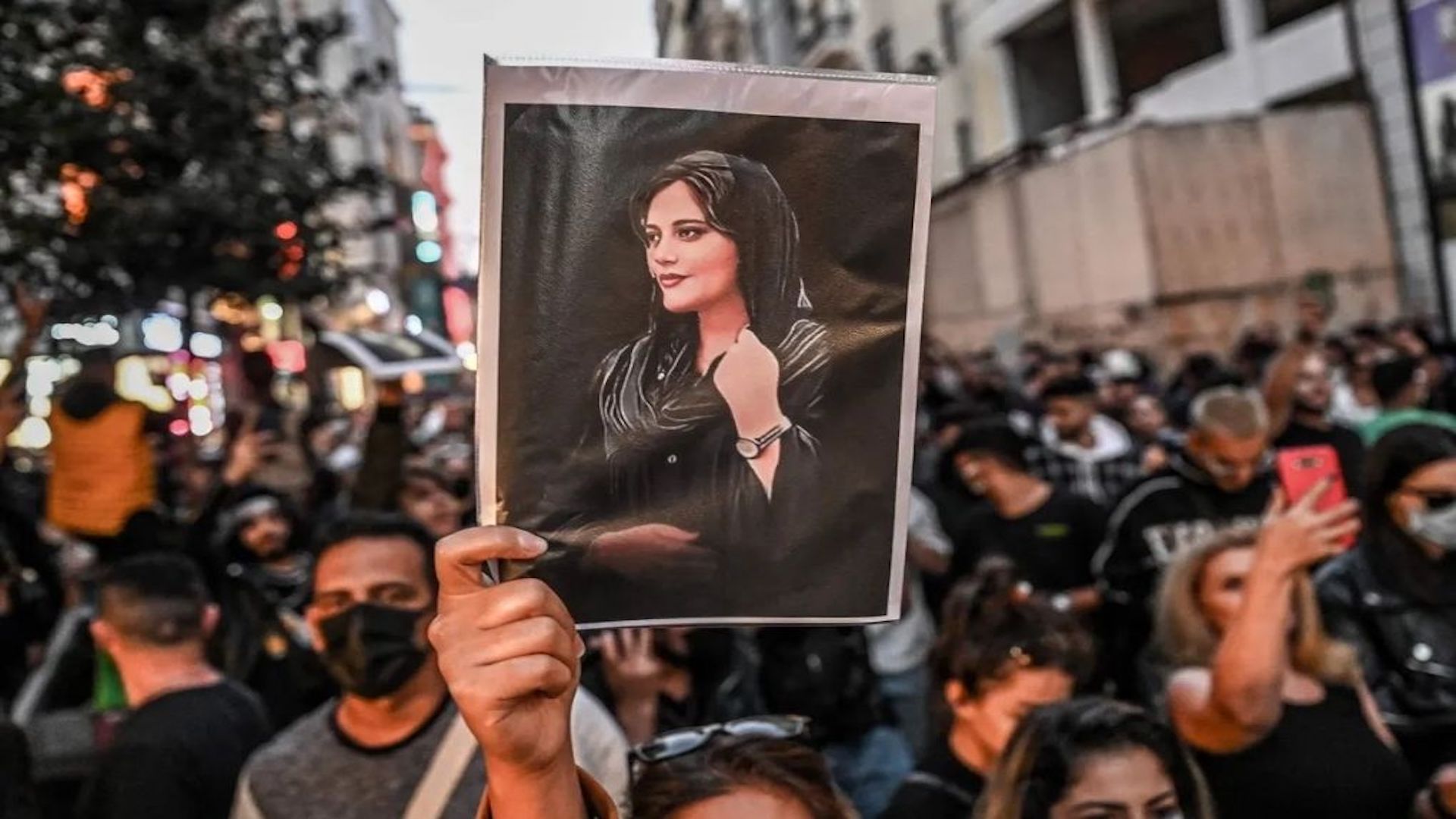On a late summer day, four days before her 23rd birthday, Mahsa Jina Amini was visiting her family in Iran’s capital city of Tehran, when she was arrested. She was forcibly placed into a van and transported to the Hijab police headquarters where she tragically passed away a few hours later. It is believed that the cause of her death was trauma to the head, inflicted by Iran’s morality police during their act of torture. It has been a year since her death.
Since the Iranian regime has a reputation for deaths occurring in custody, Mahsa’s murder caused nationwide outrage. Young people from all over Iran, including small rural towns and big cities, workers, students, professionals, and homemakers, gathered in the streets. They chanted Mahsa’s name and sparked an unexpected uprising. Their demands for change, which were collective and unified, quickly turned into a revolution that affected every aspect of Iranians’ lives, from Tehran to Toronto, Mashhad to New York, and Saqiz to Berlin.
The regime responded by arresting, raping, and killing young Iranians. However, unlike in the past, social media allowed the world to witness the unimaginable cruelty of the regime in real time. Thus, this struggle became known to the world as a fight for women, life, and freedom, and the four decades of struggle by Iranians finally became the headlines of major media outlets worldwide.
As the movement grew, so did the horrifying suppression of the regime. Unlike previous protests that were brutally crushed during the four decades of the Islamic Republic’s rule, this one united Iranians worldwide. Its intersectionality with movements like Black Lives Matter (BLM), and demands for equality for women and queer individuals, exposed the regime’s atrocities and continuous human rights violations. The regime’s ban on American and European Covid vaccines resulted in the deaths of hundreds of thousands of Iranians. Additionally, the regime’s actions such as the bombing of Flight 752, funding extremist branches of Islamists in the Middle East, failed economic policies leading to increased poverty, nepotism and corruption affecting its own activities, servitude to Russia and China, random executions, kidnappings, murders of opposition figures, and decades of neglecting the dignity of the Iranian people have further fueled the uprising. These actions have commanded urgent global attention and a call for action.
Despite the ongoing violence in Iran, including the blinding, kidnapping, and killing of young Iranians, the US was still planning a new nuclear deal with Tehran. This delay in condemning the regime’s atrocities and the behind-the-scenes negotiations with Iran’s nuclear team sparked outrage among Iranians. They felt that the US was trying to dilute their demands for regime change and instead push for a more tepid reformist approach. The frustration boiled over on October 22, when protesters forced U.S. envoy Robert Malley to apologize for his lack of sensitivity.
Meanwhile, the killers of Mahsa were eager to revive the nuclear deal to undermine the people’s hopes for regime change. They feared that a new deal would legitimize the regime and enable it to continue its campaigns of violence, including executions, imprisonments, kidnappings and rapes without the fear of global repercussions.
Unfortunately, to this day, a small but powerful cluster of regime apologists in the US and Europe continue to downplay the enormity of the regime’s human rights violations and push for a return to the status quo. Their exertions to legitimize the regime, however, have so far been unsuccessful as the world continues to empathize with the people of Iran and reject the legitimacy of the regime that runs on murder.
In April 2021, a few months after the illegal execution of Navid Afkari, a wrestling champion, whose crime was protesting against the regime, I was the keynote speaker at a Middle Eastern educational conference focusing on the new cultural paradigms in language classrooms. I discussed how the truth about Iranian culture and the tradition of resistance to the Islamic Republic have been disregarded by both publishing houses and the academia in the West, and how many Persian interlocutors prefer to present easy, albeit orientalist, images of and Iranianness as the culture to build their syllabi on.
I complained about the incessant focus on turquoise mosques, Persian food, and mystical poetry that left no space for the real story of Iran under the Islamic Republic. Iranian academics, I argued, have the choice to display the heroic culture of Iran’s revolutionaries or hide the truth under shades of blue domes and scents of rose water. The latter has proved to normalize the Iran where Navid Afkari pleads to the world to stand up for justice in Iran before it is too late. It was too late to save Navid Afkari, Mahsa Amini, Nika Shkarami, Mjidreza Rahnavard, Hadis Najafi, Kian Peerfalak, and thousands of others who were murdered by the regime; yet it is possible to use our voice to save millions of other Iranians by echoing their culture of resistance and struggle.
Therefore, on the anniversary of Mahsa Amini’s death, I have chosen to use my voice to share the story of the Iranian people’s struggle for freedom and their heroic battle against an enemy that has subjugated them for decades. The purpose of this storytelling is twofold: to challenge those who seek to rewrite Mahsa’s revolution by changing the plot to a protest against hijab and revising the ending to a demand for reform, and to shed light on conscientious advocates of Iran’s cause whose voices have kept the revolution alive and triggered significant changes in global policies towards the regime.
The past year was undoubtedly the most traumatic year for Iranians since the Islamization of the country in 1979. Although the dark 80’s witnessed the horror of thousands of political prisoners being executed and buried in mass graves, never before had so many underage civilians been murdered, blinded, raped, poisoned, and executed in public.
These advocates include Iranian American students across US colleges who have been organizing demonstrations and vigils for the past year, American and European politicians who continue to stand with Iranians, global artists who are devoted to Mahsa’s Revolution, displaced musicians who empower Iranians with their songs, ex-pat authors who continue to write about the long-standing suffering of the people of Iran, compassionate journalists who keep Iranians in the headlines, and the ten million Iranians who have left Iran over the past four decades but remain steadfast in their love for their country.
The past year was undoubtedly the most traumatic year for Iranians since the Islamization of the country in 1979. Although the dark 80’s witnessed the horror of thousands of political prisoners being executed and buried in mass graves, never before had so many underage civilians been murdered, blinded, raped, poisoned, and executed in public. Along with the national unity that aims to dismantle the pan-Islamist regime, Iranians now have a valid hope for a brighter future, giving them the agency to demand change boldly.
Additionally, Prince Reza Pahlavi, the son of the former Shah of Iran, is an intelligent and humanitarian individual who is actively involved in the political arena. His presence has helped to make Iranians more optimistic about their future. He serves as a reminder of the nation that Iran could have been, and the nation that it will become when the ruling mullahs are overthrown.
The story of Iran is an ancient tale of resilience, and it is this historical struggle for freedom that provides Iranians with the inspiration to rise up collectively with the slogan: “We are a great nation; We will take back Iran.”

The writer is an Iranian-American academic and a Professor of Persian Language and Literature at New York University.

